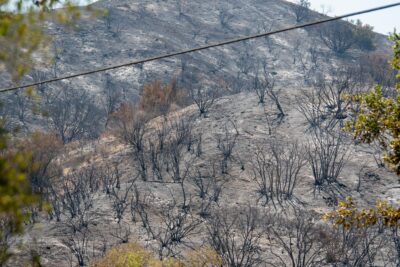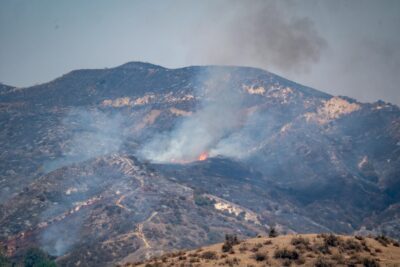After years of study and months of public outreach, the state’s fire marshal Monday issued the final round of fire-severity maps for the state, which include Los Angeles County.
The maps put millions more Californians in zones of higher concern, which were part of a reevaluation created by legislation authored by a state senator who represents part of the Santa Clarita Valley.
In terms of how the maps directly impacted SCV residents, Maria Grycan, a community liaison for the L.A. County Fire Department, said Tuesday there weren’t too many surprises for local fire officials.
The maps depict computer-modeled danger zones indicating how much more of the state is now considered fire-prone, and to what degree, since the state issued its last round of local hazard maps more than a decade ago.
Grycan said the agency saw the maps for the first time upon their release Monday, as well. While referring official comment to a separate division of the department, Grycan was able to share several initial observations.
“We did see, I would say, a significant increase in fire zone areas for Santa Clarita,” she said Tuesday in a phone call, addressing comments she made to the Castaic Area Town Council in January, ahead of the maps’ release. “You know that the parts of Castaic that I thought would fill in did, in fact, fill in, although some of it is listed as moderate.”
Most of the area was expected to show up as high-severity, according to her comments back in January.
State Sen. Henry Stern, D-Calabasas, who represents a portion of the SCV and whose legislation helped spur the first review of the fire maps in a decade, said in an email statement Monday the recent fires were a good reminder of why studying fire-severity zones is important.
Stern’s Senate Bill 63, which was passed in 2021, required Cal Fire to map not only “very high,” but also “moderate” and “high” hazard zones in regions under local jurisdiction.
“These fire severity maps are meant to predict the likelihood of devastating fires like Palisades or Eaton,” Stern wrote in a statement sent Monday via email by Anne DiGrazia, his communications director. “We need stronger standards for future development in fire zones and clear information where we need to focus home-hardening efforts so we don’t experience the horrors of January fires again.”
“The updated maps show significant increases in hazard zones across local, state, and federal jurisdictions,” according to a Feb. 18 email from DiGrazia. “This could have important implications for fire-prevention measures, emergency planning, and resources for local fire departments.”
Stern’s office said the maps provide “a more detailed picture of fire risk in local responsibility areas.”
Both state Sen. Suzette Martinez Valladares, R-Acton, and Assemblywoman Pilar Schiavo, D-Chatsworth, shared statements Tuesday engaged on the issues surrounding fire recovery in their respective districts, which have significant overlap with each other in the SCV.
“The release of these updated fire hazard maps underscores the growing wildfire risks facing our communities. Here and across California, we’ve seen firsthand the devastating impact of wildfires, and these maps confirm what we already know — fire danger is increasing,” Valladares wrote Tuesday, in a statement shared via email by Bryan Shroyer, her chief of staff. “This data should serve as a wake-up call for stronger fire-prevention efforts and better emergency preparedness. I encourage everyone to review these maps and take steps to protect their homes and families. I will continue to fight for policies that enhance wildfire prevention and will safeguard our communities.”
Schiavo’s statement Tuesday focused on how the release of the maps might impact insurance for local homeowners.
“I remain extremely concerned about how these maps may influence insurance availability and affordability,” she wrote Tuesday, in a statement sent via email by Furkan Yalcin, her communications spokesman. “While these designations don’t directly impact insurers’ risk models, we know changes like this can lead to ripple effects, especially for homeowners already facing rising premiums or policy nonrenewals. That’s why I’m committed to fight for stronger consumer protection and transparency from insurers to ensure people aren’t left behind just because they live in a fire-prone area. Californians deserve safety, security, and peace of mind, and that includes having access to fair, affordable insurance coverage, no matter their ZIP code.”








